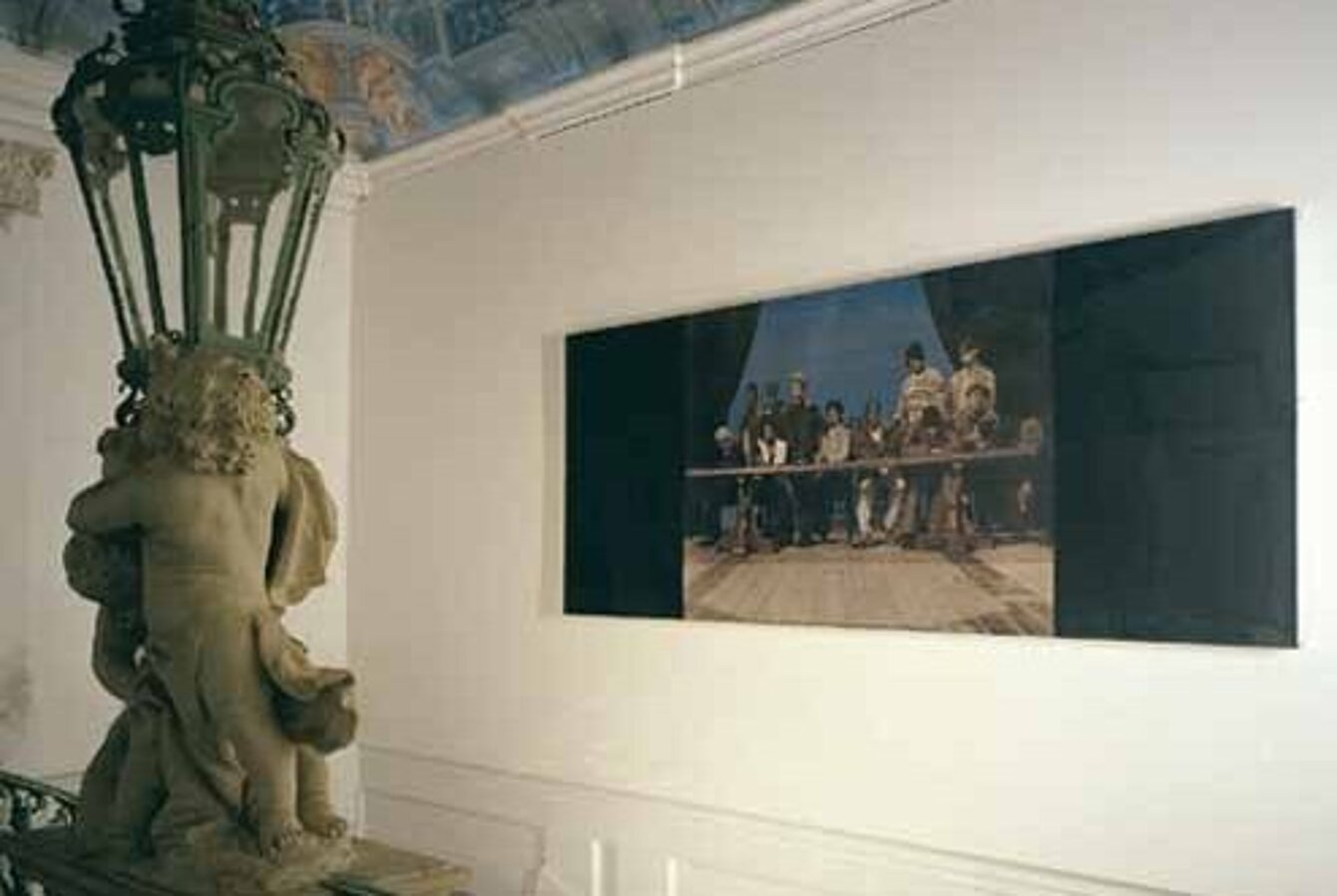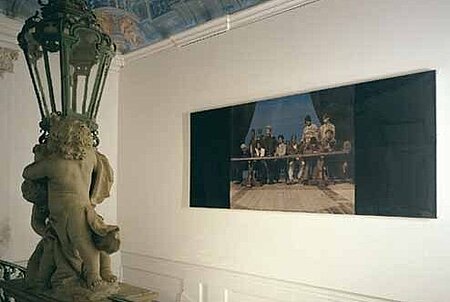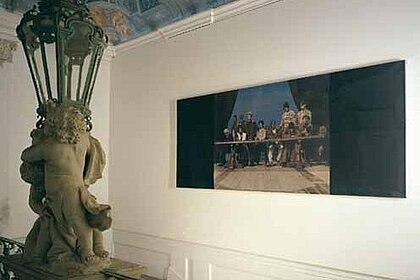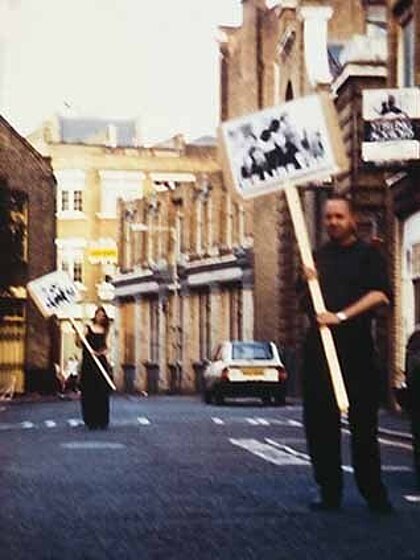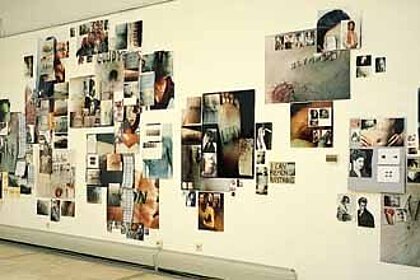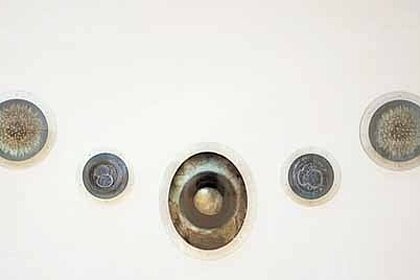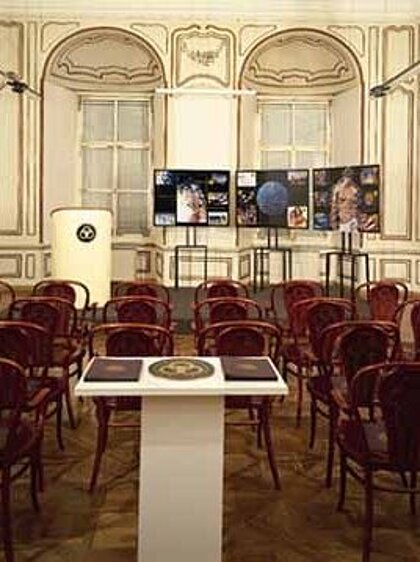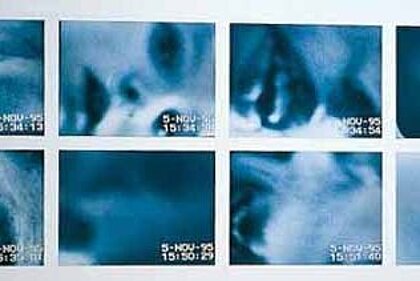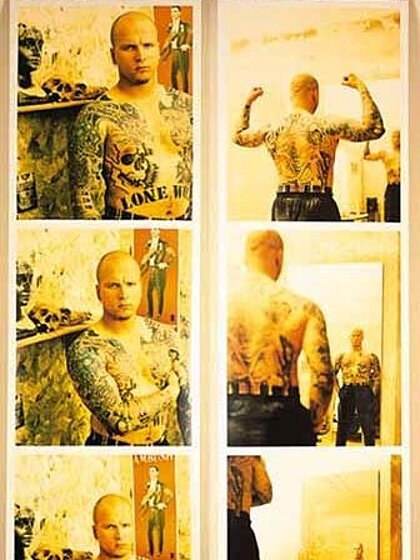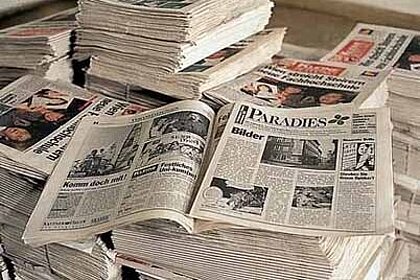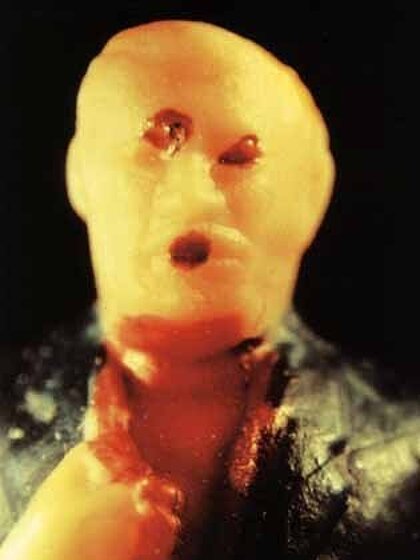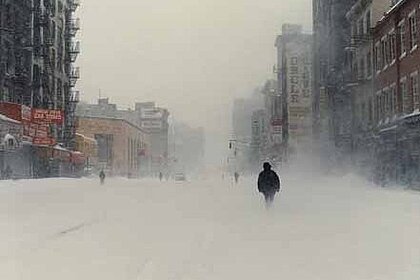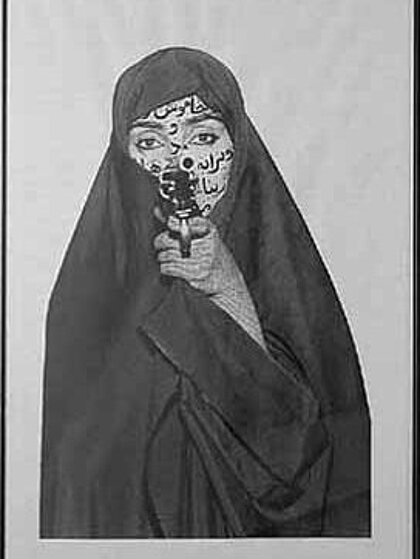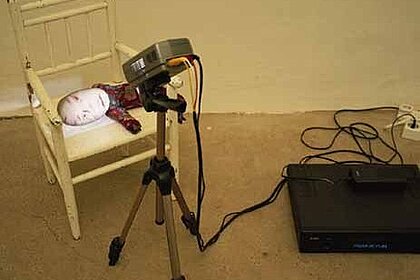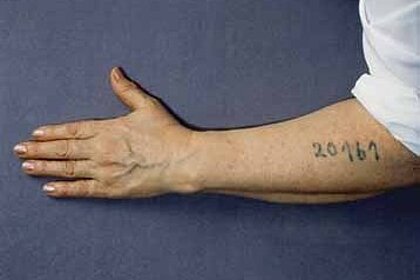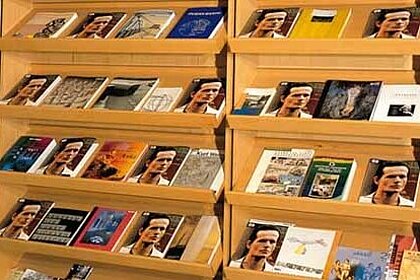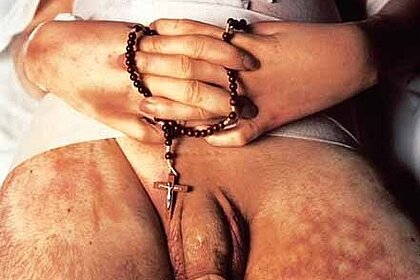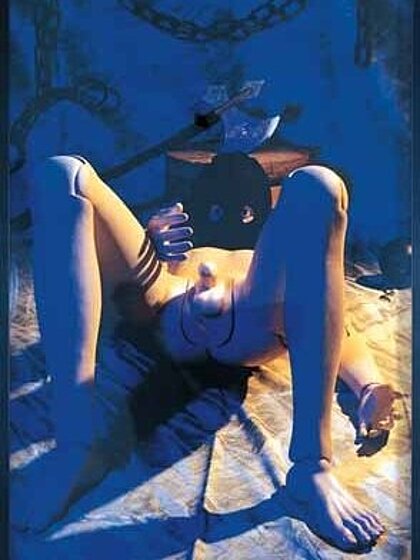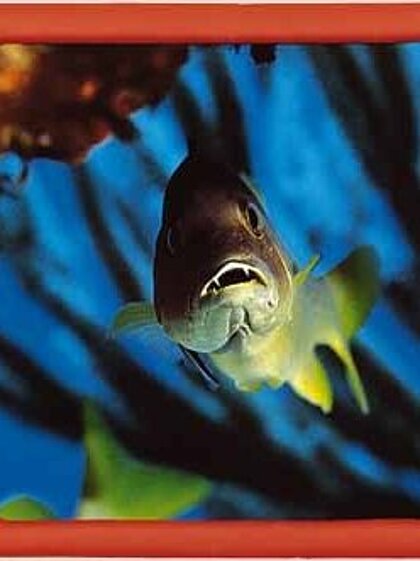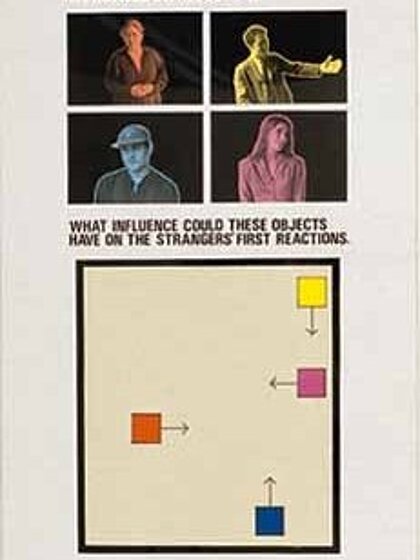From September 10th till October 31st 1996 the exhibition "RADICAL IMAGES" can be seen in the exhibitionhall Szombathely / Hungary.
The exhibition is accompanied by a catalogue in two volumes with articles by Werner Fenz (A), Reinhard Braun (A), Justin Hoffmann (D), Janka Vukmir (CRO), Andreas Broeckmann (D/NL), Andreas Spiegl (A), Frits Gierstberg (NL), Paolo Bianchi (CH) - Volume 1 - and Yve Lomax (GB), Michael Wetzel (D), Thomas Feuerstein (A), Francesco Bonami (I/USA), Octavio Zaya (E/USA), Christoph Doswald (CH), Art in Ruins (GB), Critical Art Ensemble (USA) - Volume 2.
The Triennial on Photography is commissioned by the Austrian Ministry of Art since 1993 and is based on an idea of Werner Fenz.
1st Austrian Triennial on Photography 1993
3rd Austrian Triennial on Photography 1999
The austrian triennale on photography - organised by the federal ministry of science - is a major international exhibition which provides an oppertunity every three years to question and discuss current positions in photography. Important as it is for the austrian photographic profession, it has significance for a far wider public. The point of departure for ideas at the 1996 exhibition is RADICAL IMAGES, the topic for 1993 was WAR.
In the 90s the debate in the arts has shifted to concerns about the about the contextual an social construction of art, as well as about modes of criticism, opposition an resistance. The debate can be regarded as a reaction against the post-modern view that all the items in the store of signs - artistic, social and political - are of equal value, and affects contemporary photography in a particular manner. In virtual reality , where pictorial forms of our own design are permanently available in digital space, the traditional forms (documentary and staged) in which photographs present reality may largely fade away, and their status, whether in media productions or in art, has accordingly come into question.
The title RADICAL IMAGES serves as a screen on to which various fractures, disruptions and questionings, in the social and cultural sphere as well as in that of art, can be projected. 39 international artists have been invited to create new work, based on their previous oeuvre but specially produced for the triennale and relising its theme. At the centre of the concerns addressed by artists and curators alike was the question of how photography is to radicalise itself if it is to continue to play a part in the construction and interpretation of contemporary reality. Seen from this angle the role of photographic images in systematically mediating between the world around us, society and the individual becomes central to a debate that is not confined to artists but concerns culture as a whole. Radicalism, in this context, refers not merely to content but also, and primarily, applies to method and to the concept of the image. It recognises that the artist's perception of the world needs continually to be updated. At present RADICAL IMAGES are possibly alone in contributing documents and interpretations based on this perception to the vast pictorial and media archives that exist today.
RADICAL IMAGES are ruthless in the sense that they do not obey the systems. When they comment on horror, they don't do so in order to produce documentary evidence, and they do not see beauty as irreversible. They are not fighting a rear-guard action while withdrawing to the secure terrain of art. They confirm the beautiful mirage, if thereby it can be revealed and understood as being just a beautiful mirage. Entropy is radicalised. Connected with this are the use and consumption of images in an information society which ensures the possibility of production, at whatever level is required, by technological means, and which has elevated the turning out of pictorial signs (for the purpose of building up stocks and keeping them level) into the only quality that matters.
Further, and particularly against the background of the potential of the digital image, RADICAL IMAGES will make it apparent that there are other areas to be investigated in relation to photographic methods beside that of the immateriality of the image. The variety of possibilities provides both a means of taking stock of the latest situation and a systematic approach to a particular phenomenon: to that matrix which photography possesses within the various archives of images. RADICAL IMAGES enrich these archives because they take up positions delineating society's radius of influence, and as such seek to incorporate the inevitable stacks of images. Against this background they design new aesthetic patterns of creation by altering old ones or at least rendering them visible.
Unlike conventional procedures inside and outside art, a radical formulation is not interested in reaffirmations of the known and the patterns and forms that derive from it, but is concerned, inter alia, with rendering visible things we are not conscious of, but which can manifest themselves in the handling of the various materials in which images may be realized. In this context radicalism means that the principal tool of the artist's trade is the ruthless insistence on particular formulations.
Werner Fenz
Translation: Ted Gang
If we consider radicalism as it applies to art, and specifically to the medium of pictorial art, it means in the first instance the adoption of extreme positions as regards the essential conditions of the medium. Thus the term "Radical Painting" is used to designate those works which, following in the footsteps of Conceptual Art and Minimal Art, take as their theme the formal essentials of the picture: colour, surface and the pictorial vehicle as such. Much of the painting which is now described as "Radical Painting" is simply monochrome painting of every conceivable kind. Yet monochrome painting has behind it a history of more than thirty years, so that it has almost become a convention. It seems paradoxical in these cases to lay claim to the title of radicalism: what is mainstream cannot also be radical. A comparable self-reflexiveness with regard to the medium can be found in some of the art photography of the 70s. Ugo Mulas and Nikolaus Koliusis allowed the physical factors governing the formation of the photographic image, and thus the properties of photosensitive material, help to shape their work. Their formulations made visible the essential circumstances on which photography is based. Various artists, such as John Hillard and Ottmar Hörl, stretched the capabilities of the camera to the limit in using it as a creative means of expression. One of the strategies used in establishing photography as a virtually autonomous artistic medium, called "photographic art", was to create a repertoire of forms specific to it. However, when John Miller recently remarked in an interview with Das Kunst-Bulletin (5/96) that almost everything produced by art goes back to a radical impulse, he was not presumably referring to such essentially self-reflexive uses of the medium, but rather to a social phenomenon: the fact that art is, in principle, opposed to the capitalist system because it opposes every kind of standardisation, every rigid definition and every commitment to a definite function - all of them factors which generally determine the production of goods. In spite of all attempts to absorb it into the system, art remains fundamentally dysfunctional, and in the last analysis it cannot be viewed objectively. This peculiarity has however largely been buried by the dominant ideology, so that many artist are unaware of it.
Justin Hoffmann
Translation: Ted Gang
The Second Austrian Triennial on Photography, with its theme of "Radical Pictures", returns to the interrogation of photography as a medium ( i. e. a system of communication between the external world and the individual) which plays a significant part within contemporary visual culture. But once again the theme penetrates every medium, disappearing from sight while leaving a hole which can't be occupied, at least by an image - but also providing the current project with a starting point for thinking about photography. The question at issue, however, is not what a radical picture might look like, but rather: by what means or strategies (if any) would it be possible to create an aesthetic space in which such a thing as a radical picture could be constructed, or disseminated, or represented, or even conceived? The question about the "radical picture" is thus essentially about operations involving the photographic image - processes of finding and constructing the image rather than about particular pictorial contents.
If there is no such thing as an image of radicalness, then the "radical image" can to some extent be regarded as a symptom (in something like Slavoj Zizek's sense of the word) of this exhibition. Zizek, following Jacques Lacan, used the word to refer to that which, like reality, resists being made a symbol, that which is permanently missed but which returns without neutralising itself, without allowing itself to be fully integrated into the symbolic order. The symptom is the "site" from which possible meanings are organised, from which we construct the horizon within which meanings in general can be generated. The symptom is a blind spot which can't be perceived; more importantly, it is a place, a characteristic, a gesture, that has no meaning of its own, but without which the creation of meaning would be impossible.
Reinhard Braun
Translation: Ted Gang
To be radical means to be thorough, to take drastic action. Hence radicalism strives to be thorough and all-encompassing, regardless of where it originates; and its aim is to adapt all aspects of life to its basic principle. The structure of radicalism is rational. For the majority of its adherents it is a moral phenomenon; the others see it as a practical means producing temporary effects. At all events, a radical concept is not directed by logic, or science, or economic viability, but seeks to explain the significance of various aspects of human activity by an intellectual generalisation.
Radicalism generally relies on simplifying and emphasising something which is already known - something that already stands out from the crowd. What radicalism frequently brings with it is a militant attitude and the dominance of false values. In most cases it comes to detach itself from social awareness and turns against its own origins.
Radicalism is totally lacking in practical ideas and actions, the capacity for empathy into particular situations, or the readiness to learn from experience and be flexible; sometimes it even loses any genuine interest in the truth. In its negative sense radicalism strives to threaten all aspects of life, but even if many forms of radicalism tend towards violence, it is difficult to believe that it really wants to condemn the accustomed forms of life. In its positive sense radicalism manifests a tendency to project a totally new concept of life and the activities associated with this.
In any event radicalism is a social phenomenon and closely bound up with society. In the community, again, there are rules which can be generally understood, and thus radicalism becomes an autonomous rule, for the setting up and comprehension of rules are matters for the community and not for the individual.
Janka Vukmir
Translation: Ted Gang
Artists:
Faisal Abdu´Allah&Clive Allen (GB) · · · Art in Ruins (GB) · · · Gilles Barbier (F) · · · Richard Billingham (GB) · · · Sabine Bitter/Helmut Weber (A) · · · Anna + Bernhard Joh. Blume (D) · · · Henry Bond (GB) · · · Alain Bublex (F) · · · Daniele Buetti (CH) · · · Manuela Burkart (D) · · · Helen Chadwick (GB) · · · Critical Art Ensemble (USA) · · · Petér Csikvári (H) · · · Thomas Demand (D) · · · Darko Fritz (CRO) · · · Rainer Ganahl (A) · · · G.R.A.M. (A) · · · Michael Hofstetter (D) · · · Gerald van der Kaap (NL) · · · Ali Kepenek (D) · · · Ivana Keser (CRO) · · · Jürgen Klauke (D) · · · Allan McCollum/Laurie Simmons (USA) · · · John Miller (USA) · · · Christoph Nebel (A) · · · Shirin Neshat (IR/USA) · · · Tony Oursler (GB/USA) · · · Beate Passow (D) · · · Jack Pierson (USA) · · · Richard Prince (USA) · · · Sophie Ristelhueber (F) · · · Ugo Rondinone (CH) · · · Klaus Scherübel (A) · · · Bruno Serralongue (F) · · · Andres Serrano (USA) · · · Cindy Sherman (USA) · · · Martin Sjoberg (SWE) · · · Sven Westerlund (SWE) · · · Stephen Willats (GB)




















